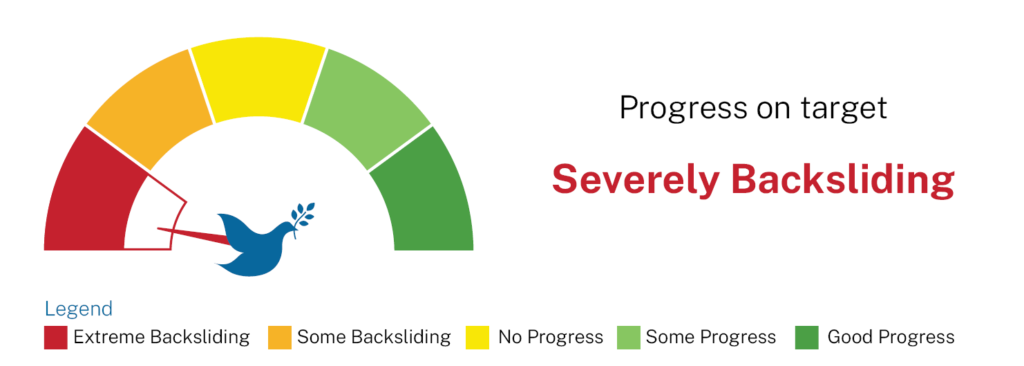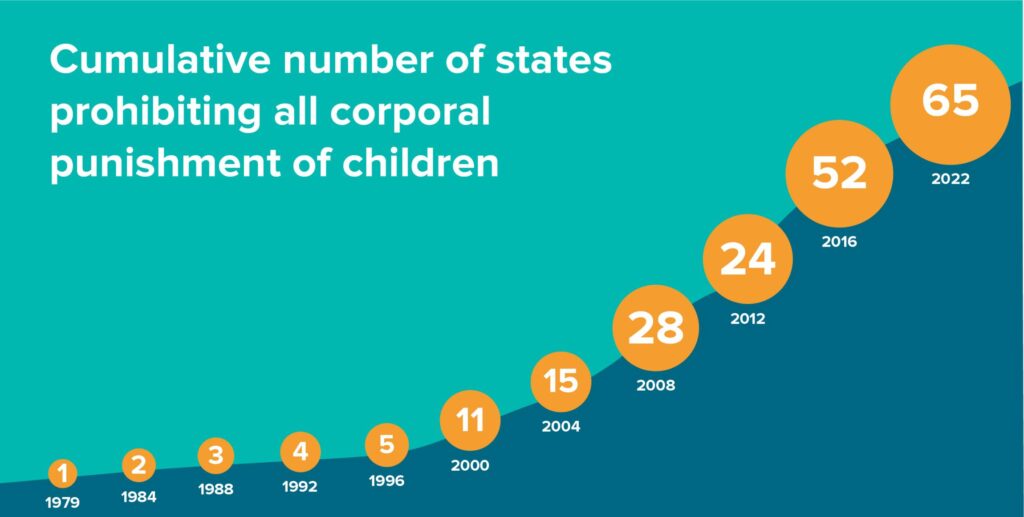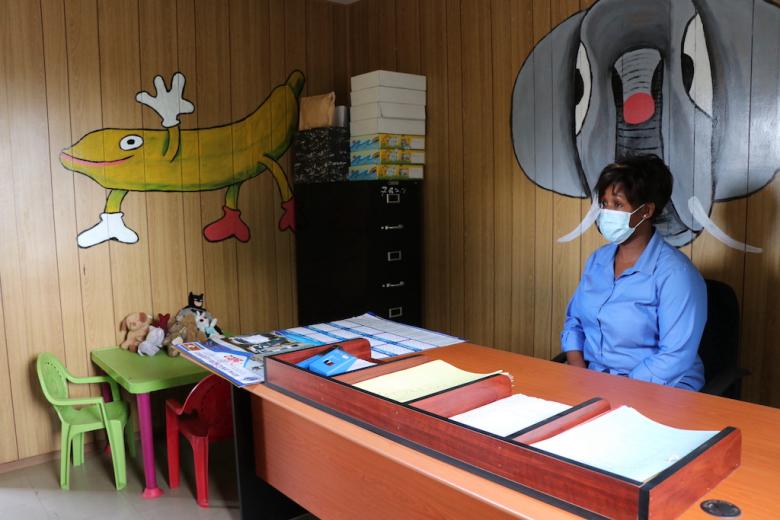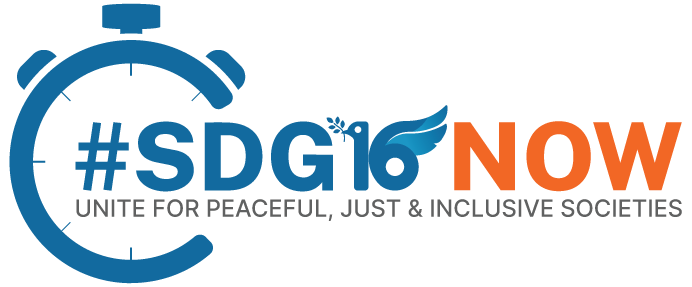Target 16.2: End abuse, exploitation, trafficking and all forms of violence against and torture of children

While some progress has been made to prevent specific forms of violence against children, such as corporal punishment and trafficking, overall progress has stalled. Certain forms of violence against children – including domestic violence, child marriage, female genital mutilation and child labour – have also increased or are likely to increase as a result of the COVID-19 pandemic. Data on violence against children remains poor, with many cases of violence unreported or underreported.
Authors of chapter

Context and Interlinkages
Ending violence against children – including “all forms of physical or mental violence, injury and abuse, neglect or negligent treatment, maltreatment or exploitation, including sexual abuse”1– is critical to achieving peaceful, just and inclusive societies and overall sustainable development. Violence against children occurs in every country, community and setting, with devastating, immediate and lifelong consequences for both individual children and societies. It impairs individual children’s brain development, their physical and mental health, and their ability to learn,2 undermining their childhood development and well-being, and limiting their potential and future productivity as adults. In addition to perpetuating the cycle of violence across generations, violence against children also has catastrophic economic costs for countries; one seminal study suggests the economic costs could be as high as eight per cent of global GDP, while national studies from a range of countries estimate it may cost up to five per cent of GDP. 3
A World Vision International analysis of the interlinkages between violence against children and the SDGs found 55 targets across 12 SDGs that are directly or indirectly relevant to ending violence against children, including eight targets that explicitly address the issue.4 These include SDG16+ targets that address specific forms of violence against children, including violence in schools (Target 4.a), violence against girls (Target 5.2), child marriage and female genital mutilation (Target 5.3), and child labour including child soldiers (Target 8.7). In addition to these targets, violence against children is closely linked to numerous other SDGs that address issues that are either drivers for violence against children – such as poverty, substance abuse and gender inequality – and/or protective factors against child violence – such as social protection, education and birth registration. Achievement of many other SDGs is also undermined by the existence of violence against children, including SDG3 (health and well-being) and SDG8 (employment and economic growth).
The right of children to be protected from all forms of violence is enshrined in the United Nations Convention on the Rights of the Child (CRC) and two of its optional protocols, to which every Member State (except for the US) is legally bound.
Progress on Indicators
Official Indicators:
- 16.2.1: The proportion of children aged 1–17 years who experienced any physical punishment and/or psychological aggression by caregivers in the past month (Tier II)
- 16.2.2: Number of victims of human trafficking per 100,000 population, by sex, age and form of exploitation (Tier I)
- 16.2.3: Proportion of young women and men aged 18–29 years who experienced sexual violence by age 18 (Tier II)
There are significant challenges in assessing global progress to end violence against children given that the phenomenon of childhood violence remains largely undocumented, underreported and unmeasured. Globally, it is estimated that approximately one billion children between the ages of 2 and 17 – half of all children in the world – experience physical, emotional or sexual violence every year.5
Trends in violence against children appear to be moving in the wrong direction. Multiple and overlapping crises are exacerbating children’s vulnerability to violence including increasing poverty, social and economic inequalities, forced displacement, conflict, climate change, environmental degradation, natural disasters, food insecurity, widespread violence and political instability.6 While the achievement of many violence-related targets – including Target 16.2 – were already ‘off track’ prior to the pandemic,7 the pandemic’s impact is likely to have long-lasting negative consequences on future progress to end violence against children. World Vision estimates that the COVID-19 pandemic, and its related quarantine restrictions, lockdowns and school closures, may have put up to an additional 85 million girls and boys at greater risk of violence.8
Furthermore, despite a steady decline in the global prevalence of child marriage over the past decade, the United Nations Children’s Fund (UNICEF) estimates that up to 10 million more girls are at risk of becoming child brides by 2030 due to the pandemic.9 Similarly, an estimated additional 2 million cases of female genital mutilation (FGM) are expected over the next decade.10 The pandemic increased gender-based violence, with reports of increased domestic violence, especially against girls.11 Progress against child labour has also stalled for the first time in two decades. Worldwide, 160 million children were engaged in child labour in 2020, with 9 million additional children at risk of being pushed into child labour by the end of 2022 due to increased poverty triggered by the pandemic.12 School closures during the pandemic also made children more susceptible to recruitment and use by parties involved in conflict, as well as to trafficking, sexual exploitation and recruitment into criminal gangs.13 In summary, the COVID-19 pandemic increased children’s vulnerability to violence in all its forms.
Violent discipline or corporal punishment (Indicator 16.2.1) is the most common form of violence suffered by children worldwide. Physical punishment encompasses “any punishment in which physical force is used and intended to cause some degree of pain or discomfort, however light”14, while violent psychological discipline involves “the use of verbal aggression, threats, intimidation, denigration, ridicule, guilt, humiliation, withdrawal of love or emotional manipulation to control children.”15 According to UNICEF, in a majority of countries, more than two in three children aged 1–14 years are subjected to physical punishment and/or psychological aggression by caregivers.16Regional estimates suggest there is little variation between boys and girls. While the majority of children worldwide (86 per cent) lack legal protection from violent discipline in all settings including the home, some progress is being made. As of March 2023, 65 countries had prohibited all forms of corporal punishment of children in all settings and 27 more countries had committed to reforming their laws to achieve a complete legal ban.17 Corporal punishment is more likely to be banned in schools (136 countries), penal institutions (145 countries) and as a sentence for a crime (170 countries), than in other settings including the home, alternative care and day care. Although all countries have the capacity to ban corporal punishment in all settings, at the current rate, it is highly unlikely that all countries will do so by 2030.

Child trafficking (16.2.2) is the recruitment and/or transfer, harbouring or receipt of children for the purpose of exploitation, typically for forced labour and sexual exploitation. According to the 2022 United Nations Office on Drugs and Crime (UNODC) Global Report on Trafficking in Persons, children accounted for 35 per cent of all detected victims of trafficking in 2020,18 the highest proportion since 2004. Among all detected victims of trafficking in 2020, 18 per cent were girls and 17 per cent were boys, with girls more likely to be trafficked for the purpose of sexual exploitation, while boys were more likely to be trafficked for the purposes of forced criminality and forced labour. During trafficking, girls and women are three times more likely to suffer physical or extreme violence (including sexual violence) compared to boys and men, while children are two times more likely to suffer physical or extreme violence compared to adults. Girls are also 1.5 times more likely to suffer violence than women during trafficking, regardless of the type of criminality involved or form of exploitation.19 In 2020, for the first time, the number of victims of trafficking detected globally decreased. However, this could be the result of lower institutional capacity to detect victims, fewer opportunities for traffickers to operate due to COVID-19 restrictions, and some trafficking operations moving to more hidden and harder-to-detect locations. The United Nations Protocol to Prevent, Suppress and Punish Trafficking in Persons, Especially Women and Children, remains the primary international agreement to combat human trafficking, with 181 states party to the protocol as of February 2023.20 Despite its near universal ratification and the significant attention and sustained effort afforded to it on the part of the international community, trafficking in persons – including children – remains endemic.21
Sexual violence (16.2.3) is one of the gravest forms of violence against children, both girls and boys. Acts of sexual violence, which often occur together with other forms of violence, can range from direct physical contact to unwanted exposure to sexual language and images.22 Global data on sexual violence is limited and incidents of sexual violence in childhood are likely severely underreported since many victims are unable or unwilling to report them. According to the World Health Organisation’s (WHO’s) Global Status Report on Preventing Violence against Children 2020, an estimated 120 million females – 1 in 10 girls – have suffered some form of forced sexual contact before the age of 20,23 while at least five per cent of young women report experiences of sexual violence in childhood in one-third of countries.24 There are no global estimates for sexual violence against boys,26 with a notable gap in the global understanding, research, prevention and response to this type of violence.27 Progress to reduce sexual violence against children has likely been hindered by the increase in conflicts, natural disasters and other humanitarian crises, as well as the increasing use of digital technologies by children, all of which put children at greater risk.
Recommendations
To accelerate action to achieve Target 16.2, Member States should, working in partnership with other key stakeholders including civil society, academia, the private sector and children:
- Strengthen and enforce legislative frameworks to ensure there are laws in place that prohibit all forms of violence against children in all settings and address the risk factors for violence.
- Develop and implement national action plans and strategies to end violence against children that are fully costed and funded and include timebound and measurable targets to end all forms of violence against children, including marginalised groups.
- Develop and implement a national coordinating framework for integrated national planning, communication and action across all government ministries and stakeholders.
- Implement evidence-based solutions to end violence against children including the INSPIRE strategies, which have shown success in reducing violence against children.
- Increase government delivery of community-based campaigns that contribute to social and behavioural change and prevent violence against children.
- Increase funding and transparency in budgets for integrated, cross-sectoral child- and gender-sensitive protection and violence prevention, and mobilise additional funding from other sources.
- Prioritise and invest in research and regular data collection and dissemination, including focusing on neglected forms of violence against children and violence suffered by marginalised groups.
- Commit to regular monitoring and reporting on violence against children including in national statistical programmes, Voluntary National Reviews (VNRs) at the High-level Political Forum (HLPF) on Sustainable Development and international human rights reporting processes such as the CRC and Universal Periodic Review (UPR).
- Be informed by the views of children by supporting their meaningful and active participation in the development, implementation and monitoring of initiatives to end violence against children.
- Be a global champion for the prevention of violence against children, including by becoming a pathfinder country under the Global Partnership and Fund to End Violence against Children.

Resources:
- United Nations: Annual report of the Special Representative of the Secretary-General on Violence against Children
- UNICEF, Office of the Special Representative on Violence against Children, World Vision International, ChildFund Alliance, Plan International and Save the Children: The Violence-Prevention Dividend – Why Preventing Violence Against Children Makes Economic Sense
- World Vision International: Ensuring children are not left behind: Guidance for countries preparing for Voluntary National Reviews at the High-level Political Forum on Sustainable Development
- Office of the Special Representative of the Secretary- General on Violence against Children: Keeping the Promise: Ending Violence Against Children by 2030
- World Health Organisation: INSPIRE: Seven strategies for ending violence against children
- World Vision International: Small Cracks, Big Gaps: How governments allow violence against children to persist
Case Study: Child-friendly centres encourage sexual abuse reporting
Thandazile Mafu is a police officer based in Lubulini, Eswatini in the Domestic Violence and Child Protection Unit. According to Mafu, there are different forms of abuse occurring in the community, including the sexual abuse of children; however, reporting on this form of abuse had previously been minimal.
One of the major barriers to reporting abuse was the very public nature of reporting it to the police. Previously, sexual abuse survivors were forced to report over the counter in a reception area, even if the reception was full of people. According to Mafu, this was incredibly humiliating for victims and lacked any confidentiality. Survivors would have to stay in the reception area with torn or bloodied clothes, sometimes being harassed by other people with inappropriate and abusive comments. In some cases, police officers would mistreat survivors if their dress code appeared indecent to them. Unsurprisingly, some survivors ending up withdrawing from the reporting process.
World Vision and other partners advocated for greater privacy for survivors, however the Eswatini Government did not have the financial resources to offer such reporting spaces within the police service. In response, World Vision identified some police stations to be equipped with child-friendly services. There are now currently 12 centres in the country that have been fully fitted with furniture for the Desk Officers and child-friendly furniture, as well as wall art, colouring books, crayons and dolls. In some centres, World Vision has provided clothes that can be given to survivors when they come to report abuse and must leave their clothes with the police as evidence.
As a result of the Child-Friendly Centres, more people, including children, are now reporting cases of abuse (including sexual abuse), according to Mafu. However, more work still needs to be done, including ensuring that police officers are trained on the country’s existing laws and how to appropriately handle survivors of violence.

